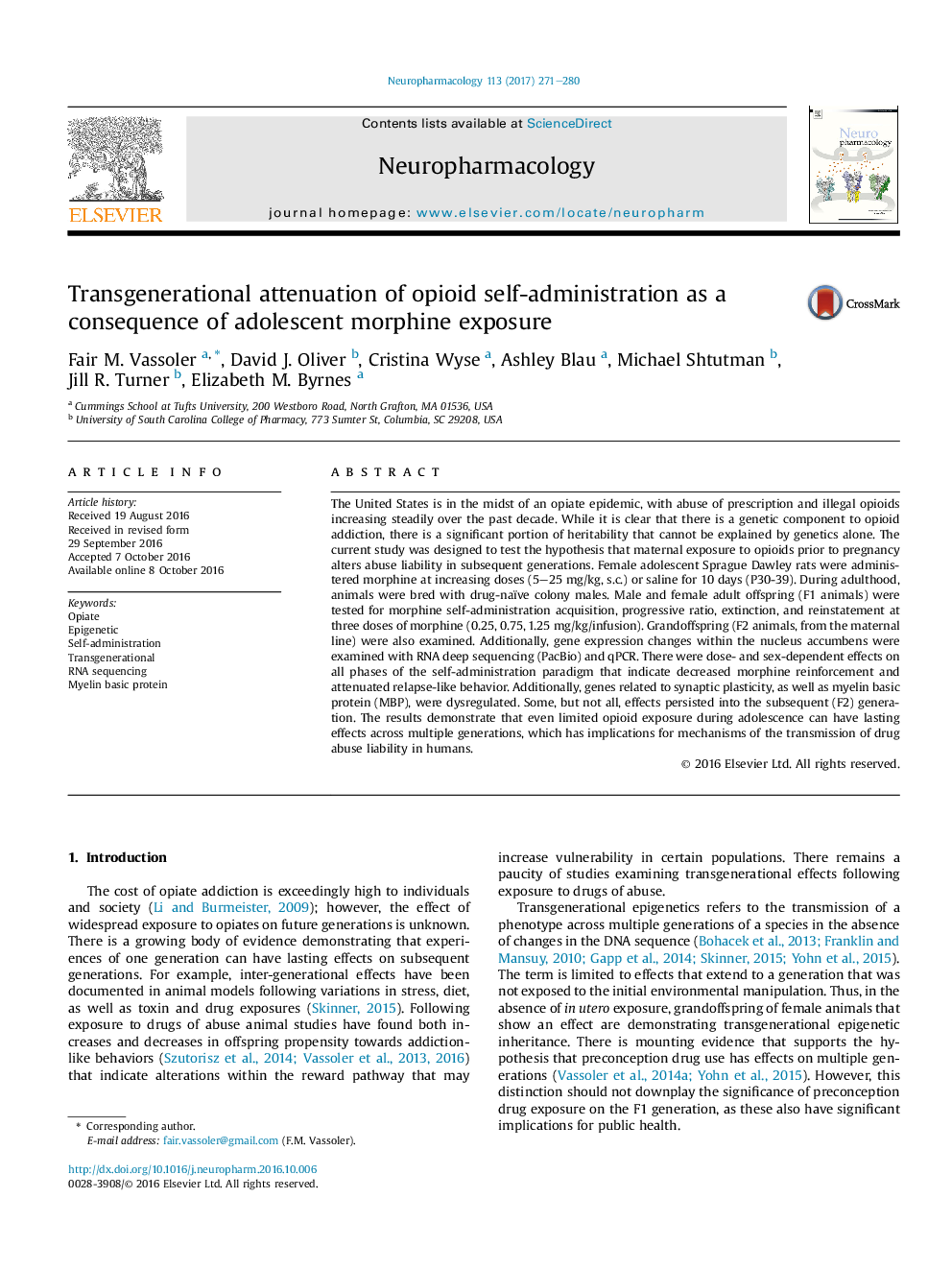| کد مقاله | کد نشریه | سال انتشار | مقاله انگلیسی | نسخه تمام متن |
|---|---|---|---|---|
| 5549149 | 1402857 | 2017 | 10 صفحه PDF | دانلود رایگان |
- Adolescent opiate exposure decreases morphine self-administration in offspring.
- Male offspring and grandoffspring demonstrate decreased reinstatement behavior.
- Genes related to synaptic plasticity were dysregulated in F1 and F2 animals.
- Myelin basic protein is dysregulated in male and female F1 and F2 animals.
The United States is in the midst of an opiate epidemic, with abuse of prescription and illegal opioids increasing steadily over the past decade. While it is clear that there is a genetic component to opioid addiction, there is a significant portion of heritability that cannot be explained by genetics alone. The current study was designed to test the hypothesis that maternal exposure to opioids prior to pregnancy alters abuse liability in subsequent generations. Female adolescent Sprague Dawley rats were administered morphine at increasing doses (5-25Â mg/kg, s.c.) or saline for 10 days (P30-39). During adulthood, animals were bred with drug-naïve colony males. Male and female adult offspring (F1 animals) were tested for morphine self-administration acquisition, progressive ratio, extinction, and reinstatement at three doses of morphine (0.25, 0.75, 1.25Â mg/kg/infusion). Grandoffspring (F2 animals, from the maternal line) were also examined. Additionally, gene expression changes within the nucleus accumbens were examined with RNA deep sequencing (PacBio) and qPCR. There were dose- and sex-dependent effects on all phases of the self-administration paradigm that indicate decreased morphine reinforcement and attenuated relapse-like behavior. Additionally, genes related to synaptic plasticity, as well as myelin basic protein (MBP), were dysregulated. Some, but not all, effects persisted into the subsequent (F2) generation. The results demonstrate that even limited opioid exposure during adolescence can have lasting effects across multiple generations, which has implications for mechanisms of the transmission of drug abuse liability in humans.
Journal: Neuropharmacology - Volume 113, Part A, February 2017, Pages 271-280
